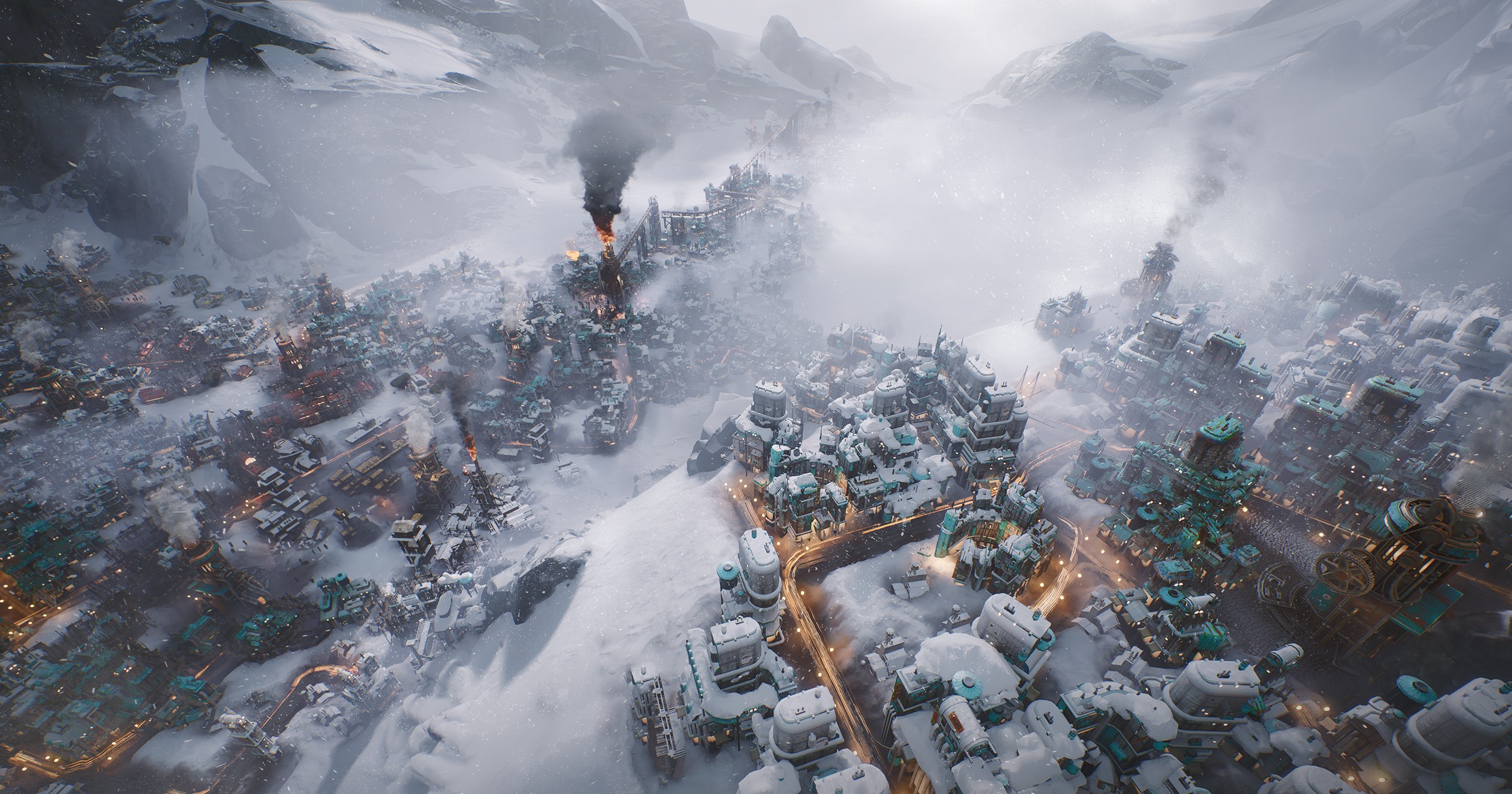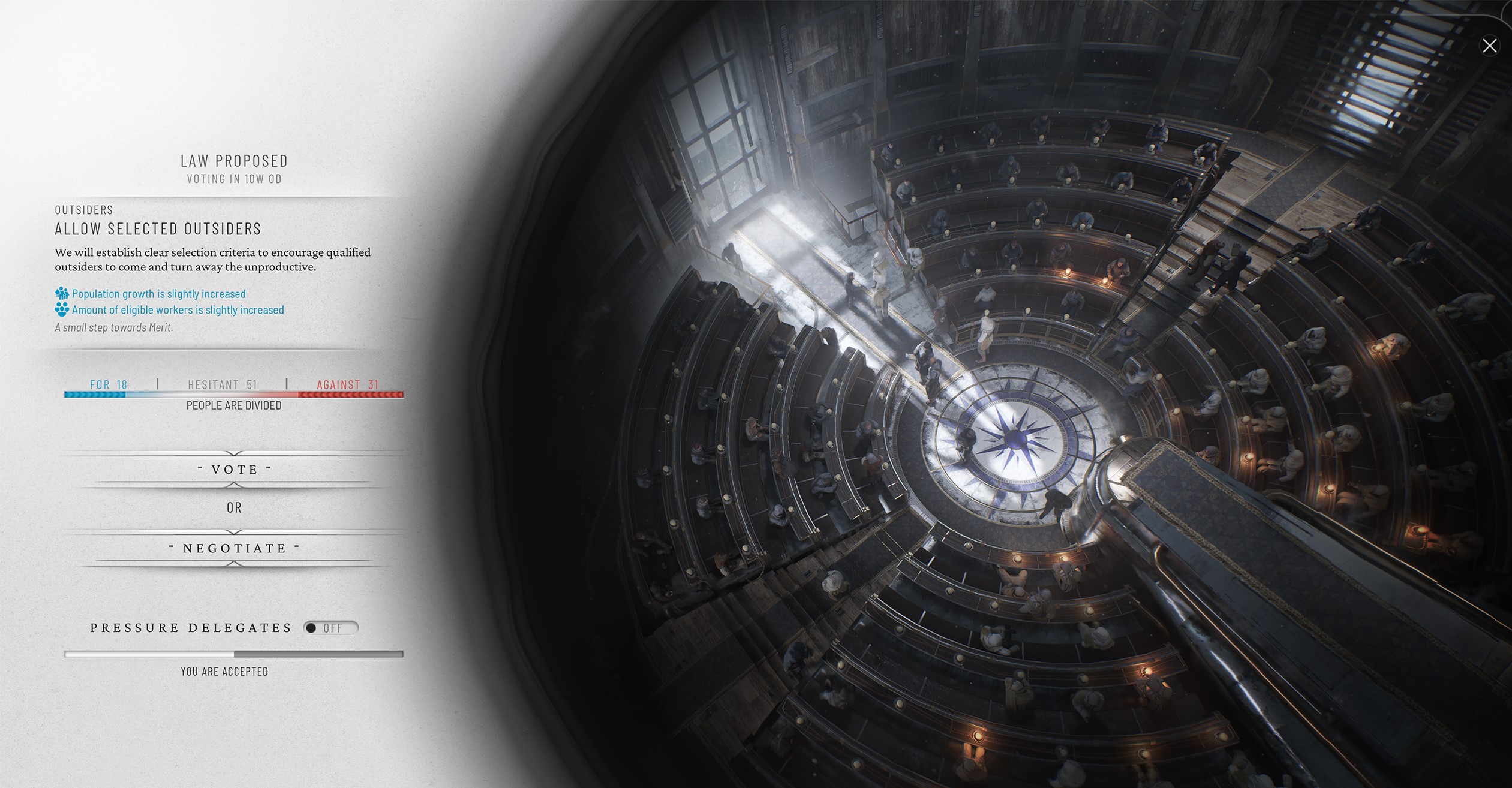You've survived the end of the world—now Frostpunk 2 wants you to survive a population that doesn't get along
How do you build a utopia when everyone wants something different?

Congratulations, you have survived the end of the world. Set 30 years after the original game, Frostpunk 2 puts you in charge of a city no longer battling for its very life. To be clear, the outlook still isn't sunny. The world outside your city is still frozen and harsh. It's still possible to die of hunger and lack of resources. And your increasing population and expansion leads to demands that, if unmet, can cause serious issues. Nevertheless, the worst is over.
So what now?
That's the question at the heart of the sequel, due out in 2024. It's no longer a case of can you survive. Instead, it asks, now that you have survived, what do you want your future to be?
At Gamescom, I saw a chunk of Frostpunk 2's sandbox mode, called Utopia Builder. During campaign creation, in addition to the standard city builder customisation options, you also pick two communities who will make up the population of your city. For this demo, the developers pick the Engineers and the Foragers. The Engineers are the descendants of the people who built the generator cities. Their belief is that human ingenuity is what led to their survival. The Foragers, meanwhile, bore the brunt of the Frostlands with just their will to survive. They're wary of relying too much on technology, believing that adaptability is the only thing they can depend on.
The tension between communities is at the heart of what makes Frostpunk 2 such a meaningful sequel, as is the scale. The city you start with at the beginning of a campaign is roughly the size of what you might end with in the original game. Rather than placing each individual building, here you're planning out whole districts for expansion, and placing important buildings within them to act as modifiers or unlock important systems.
The Research Institute, for instance, is Frostpunk 2's version of a tech tree. But rather than simply select new options from a list, it builds off the tension between your city's communities. Each option takes the form of a question—a problem in need of a solution. In the demo, the developers select a question—"How do we produce more food?"—and are given suggestions from the two factions. The Foragers want to use human waste as fertiliser.

In many ways these choices feel like a parallel to the first game's moral questions—child labour, cutting rations, treating the gravely ill. But rather than immediate survival, here you're creating the blueprint for a new society. Pick one community's suggestion, and the other might react strongly to the fact that society is moving in a direction they oppose. After choosing to build biowaste facilities, the Engineers aren't happy. When dysentery breaks out among the population, it seems their fears weren't unfounded.
Keep up to date with the most important stories and the best deals, as picked by the PC Gamer team.
Perhaps the most important new building is the Council Hall, where delegates from the factions bring ideas and vote on the laws you want to enact. A disagreement has formed on the role of children in this new society. The Engineers, naturally, think they should be sent to school. The Foragers, meanwhile, think that raising children should be entirely down to the desires of the parents—and many of the parents want to send their kids out to work. You can propose a law based on these viewpoints, but with a 50/50 split on the council it will be a coin toss which way that vote would go. You can also choose to negotiate—the Engineers may want you to pursue a specific problem in the Research Institute's idea tree, and be willing to vote your way if you agree. If you commit, though, they'll expect you to follow up. The developers call this a reverse power fantasy—a situation that makes you a prisoner of your own choices.

We roll the dice on compulsory education for children, and secure 52 of the 51 votes needed for the measure to pass. It's far from a unanimous decision, and so there'll likely be consequences down the line.
The real twist of Frostpunk 2's new scope is revealed when the developers skip forward two years into the same playthrough. New factions have emerged—extreme offshoots of the original communities. The Icebloods are an extremist take on the Forager ideology, who believe that if you're not fit enough to survive then fine, you should die. The Technocrats, meanwhile, have taken the Engineer's predilection for science and reason to a horrifying conclusion, arguing that data driven choices should decide all of society's choices, including who should marry, how many children and so on. While both factions are small for now, it's clear their influence is growing, and that they'll never be persuaded to vote with an opposing faction. The Engineer's idea of utopia would be a dystopia for the Icebloods. So how do you balance their existence with the need to drive society forward?
It's a fascinating change of direction. Frostpunk 2 is now a game about divergent ambition; about the point at which ideas become so strong they lose sight of the people they're applied to. Survival almost feels small in comparison.

Phil has been writing for PC Gamer for nearly a decade, starting out as a freelance writer covering everything from free games to MMOs. He eventually joined full-time as a news writer, before moving to the magazine to review immersive sims, RPGs and Hitman games. Now he leads PC Gamer's UK team, but still sometimes finds the time to write about his ongoing obsessions with Destiny 2, GTA Online and Apex Legends. When he's not levelling up battle passes, he's checking out the latest tactics game or dipping back into Guild Wars 2. He's largely responsible for the whole Tub Geralt thing, but still isn't sorry.

